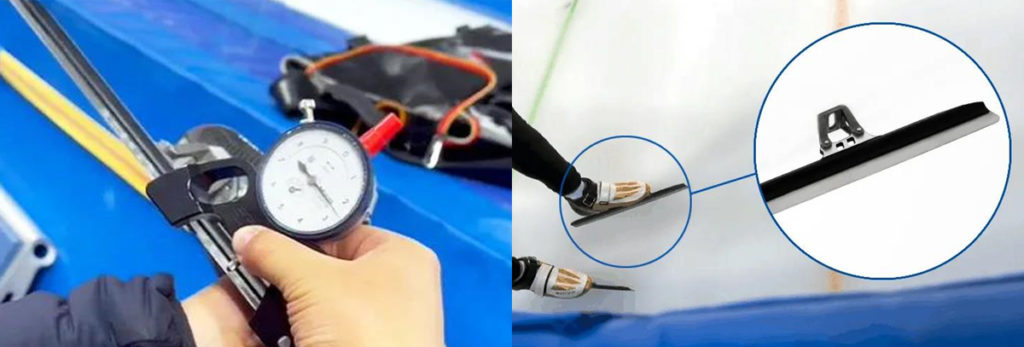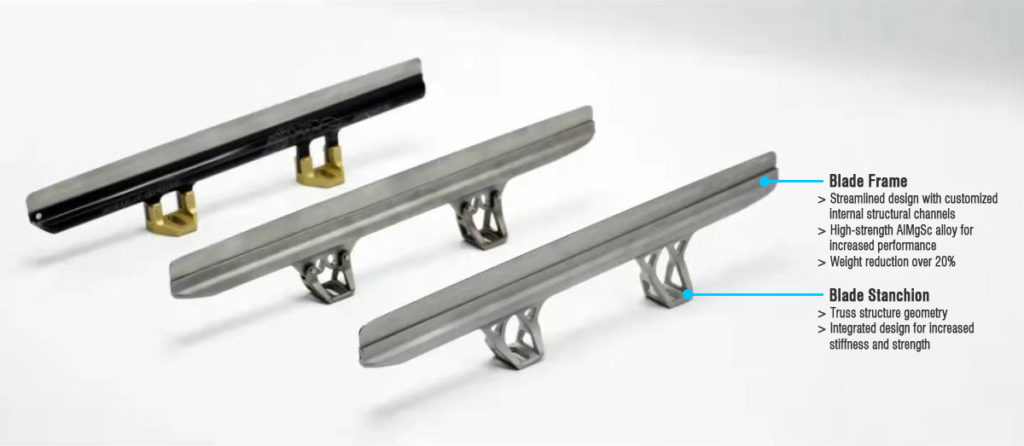3D printing and 3D scanning have been extensively used in cycling for custom bikes on the road and track. Metron, in particular, 3D prints a lot of bike components for the Summer Olympics. Reportedly, many top athletes have 3D printed parts to customize their shoes, as well. We know luge teams have relied on additive manufacturing, as have paralympians. So, we can assume bobsledding teams would probably also have used it by now. In the 2018 Olympic season, Farsoon made 3D printed fingertips for the gloves that ice skaters wore. Now, Farsoon reports that it has 3D printed a short track ice skating blade for the Chinese team, which took two home gold medals for the Short Track Speed Skating event.

With Short Track, somewhat chaotic and always exciting races are run not around a large oval, of which there are few, but in a small ring that fits inside an ice hockey rink, of which there are many more. Short track is very tactical and has rather a lot of pushing and shoving, overtaking, crashes, and drama compared to the more staid and fitness-focused traditional, long distance skating. For Winter Olympics Short Track Speed Skating, Farsoon worked with the Chinese Olympic Committee to come up with higher performing blades for its skaters.

To achieve a high-performance set of blades, Farsoon set about making a topology optimized skate blade just for this sport. This was then tested and iterated on their FS421M system, a dual-laser system with a 425 x 425 x 420mm build volume and open parameters. This makes it ideal for exploring new materials. It comes with a powder handling solution and is suited for 316L, IN718, IN625, AlSi10Mg, AlMgScZr, TA15, Ti6Al4V and CuSn10. By the way, TA 15 is Ti-6Al-2Zr-1Mo-1V, near-pure titanium, while CuSn10 is a copper tin alloy used in applications like marine impellers and pistons.
Farsoon then optimized the part for the actual type of movement it would be subject to and, therefore, focused on lateral strength. This was followed by the application of dynamic data for each individual skater to make each blade. This resulted in a more aerodynamic design and a weight reduction of over 20 percent. The stanchion component that attaches the blade to the boot was also redesigned into a truss, to provide more stiffness and strength. After a few iterations, the firm also looked at the installation and use of the blades to see that this happened properly.

The company used AlMgSc, which is essentially Scalmalloy, but without the imprimatur of AP Works behind it. The material was chosen to give the blades high strength, while remaining lightweight. Additionally, the material prints very fast on Farsoon’s machines, making it low cost and very high performance. Whereas, the traditional blade weighed 288.94 grams, its 3D printed counterpart weighed just 206 grams. One unnamed short tracker said of the footwear:
“Farsoon’s 3D printed skate blades showcases better flexibility in use due to the reduced weight, which offers smoother and better ice grip at cornering and sharp turns. During our regular tests under many extreme conditions the optimized blades can successfully withstand the mechanical pressure generated by both intensive starting and fast sliding.”
There’s no word on if the company further individualized the blades for each rider. One could even think of customizing them for every race, depending on the opposition or the starting position. Maybe a quick start is imperative in one race, while greater maneuverability would be crucial in another. Aiming to go for the inside corner? Perhaps we can design a blade for that particular strategy, as well. I love the possibilities this opens up. I really think that in a lot of 3D printed sporting equipment can play a role in giving athletes edge.
Subscribe to Our Email Newsletter
Stay up-to-date on all the latest news from the 3D printing industry and receive information and offers from third party vendors.
You May Also Like
Profiling a Construction 3D Printing Pioneer: US Army Corps of Engineers’ Megan Kreiger
The world of construction 3D printing is still so new that the true experts can probably be counted on two hands. Among them is Megan Kreiger, Portfolio Manager of Additive...
US Army Corps of Engineers Taps Lincoln Electric & Eaton for Largest 3D Printed US Civil Works Part
The Soo Locks sit on the US-Canadian border, enabling maritime travel between Lake Superior and Lake Huron, from which ships can reach the rest of the Great Lakes. Crafts carrying...
Construction 3D Printing CEO Reflects on Being Female in Construction
Natalie Wadley, CEO of ChangeMaker3D, could hear the words of her daughter sitting next to her resounding in her head. “Mum, MUM, you’ve won!” Wadley had just won the prestigious...
1Print to Commercialize 3D Printed Coastal Resilience Solutions
1Print, a company that specializes in deploying additive construction (AC) for infrastructure projects, has entered an agreement with the University of Miami (UM) to accelerate commercialization of the SEAHIVE shoreline...





























